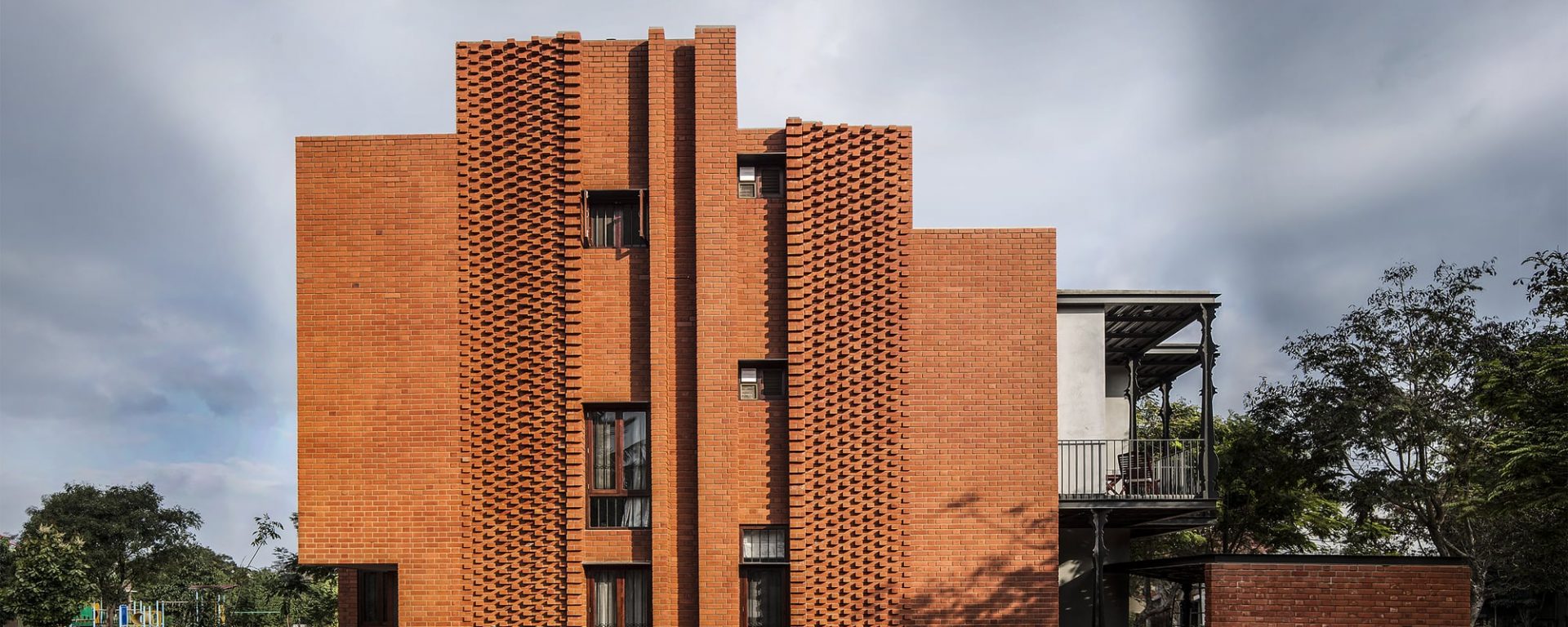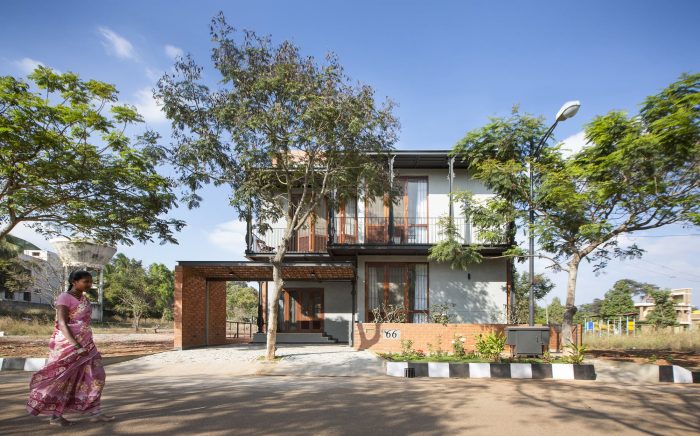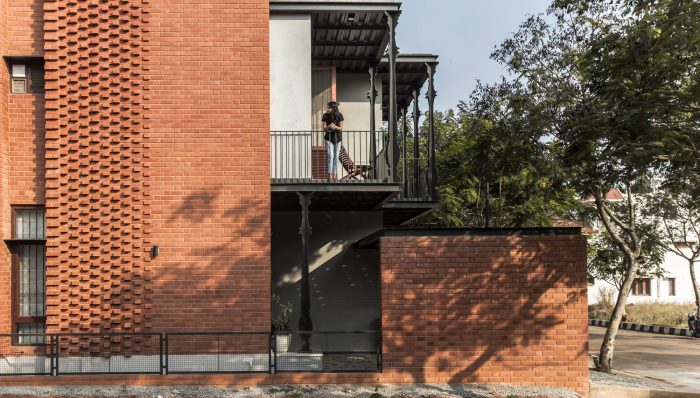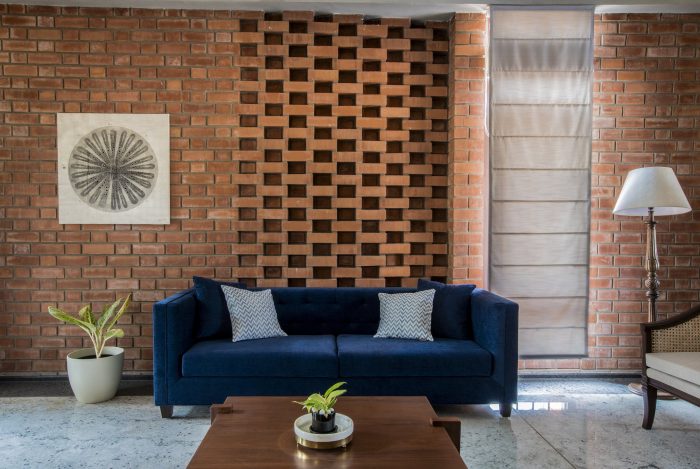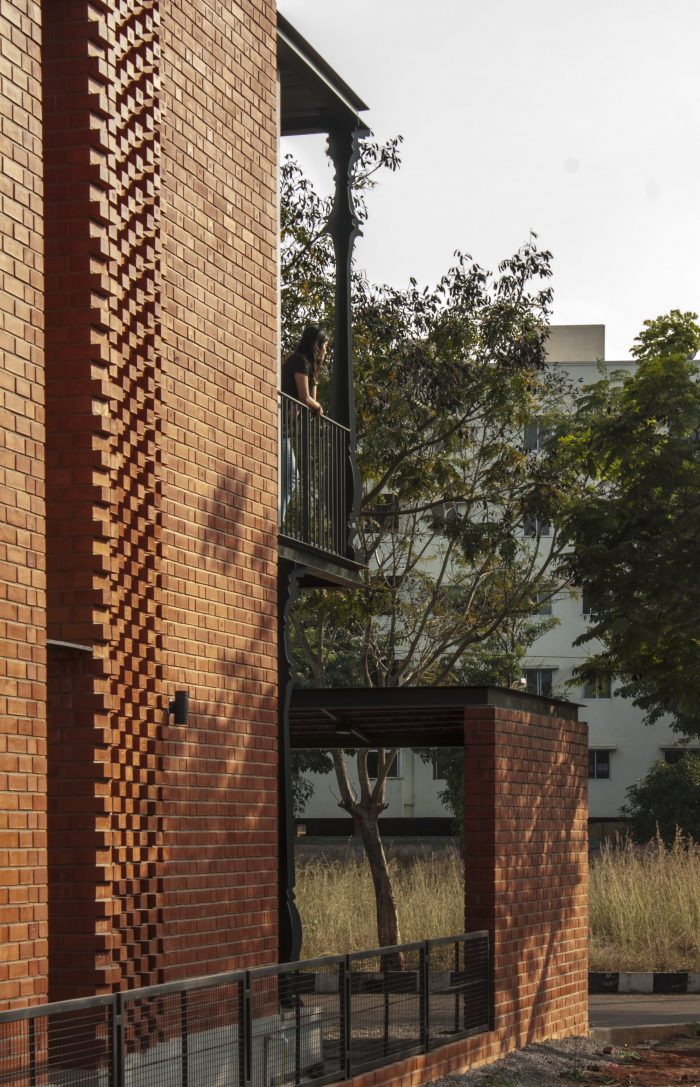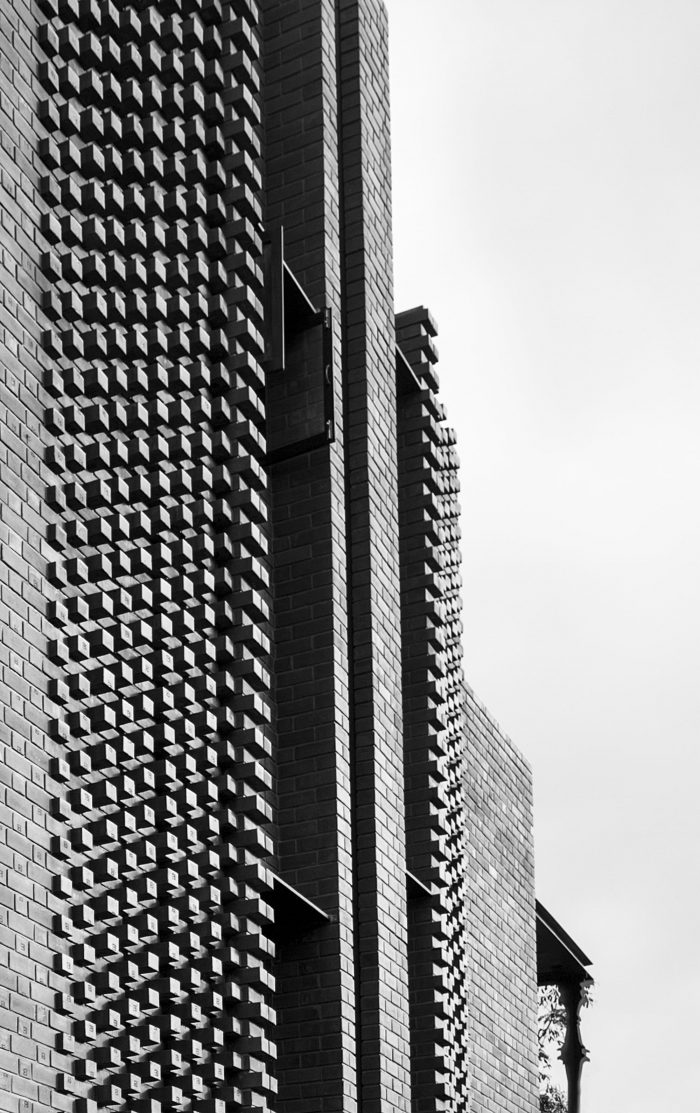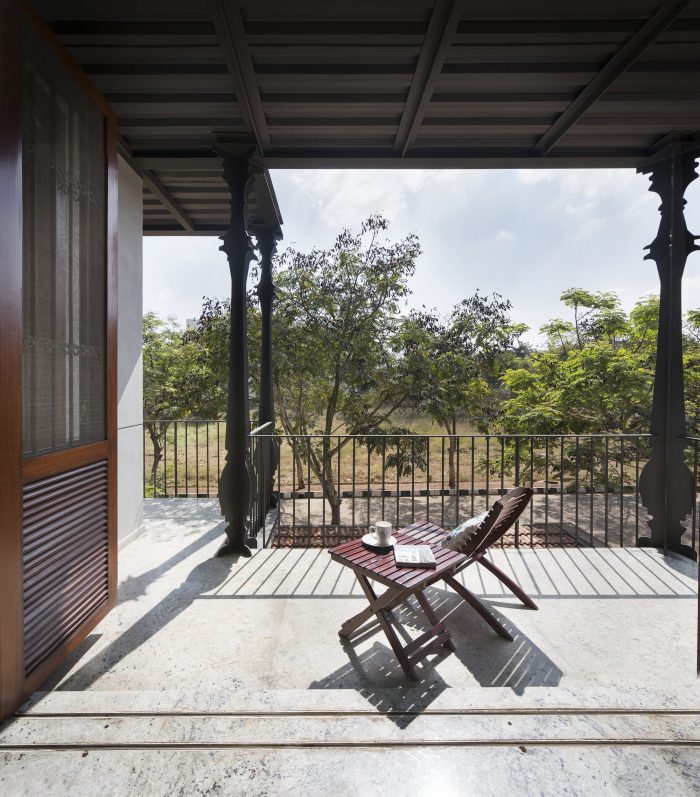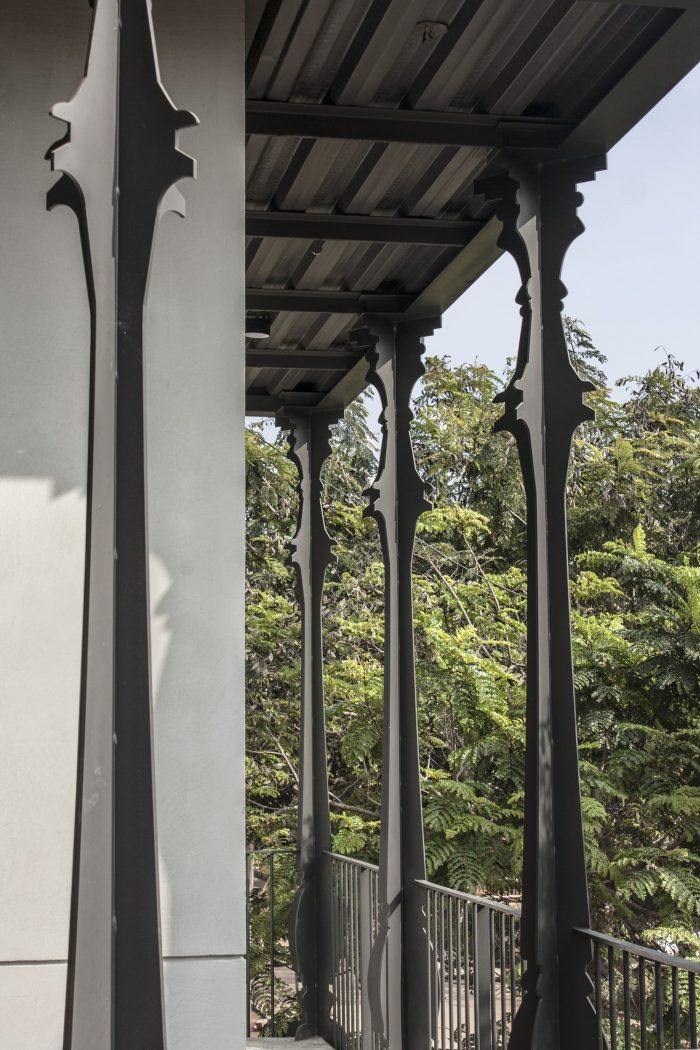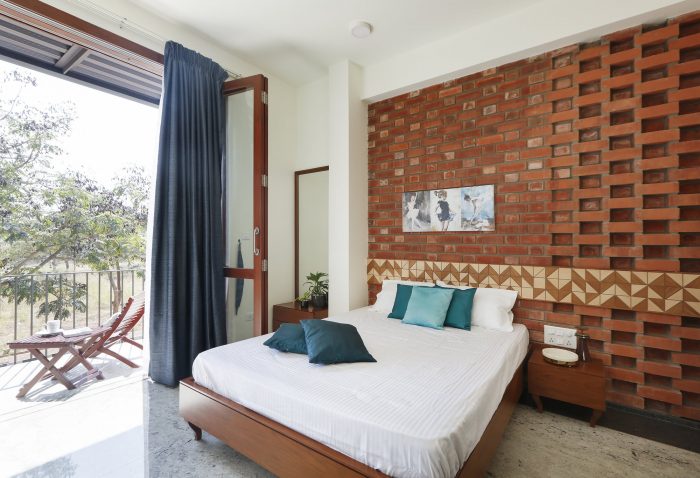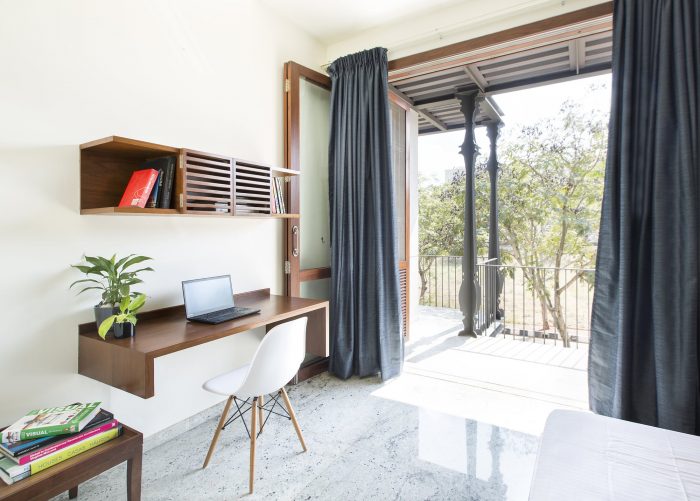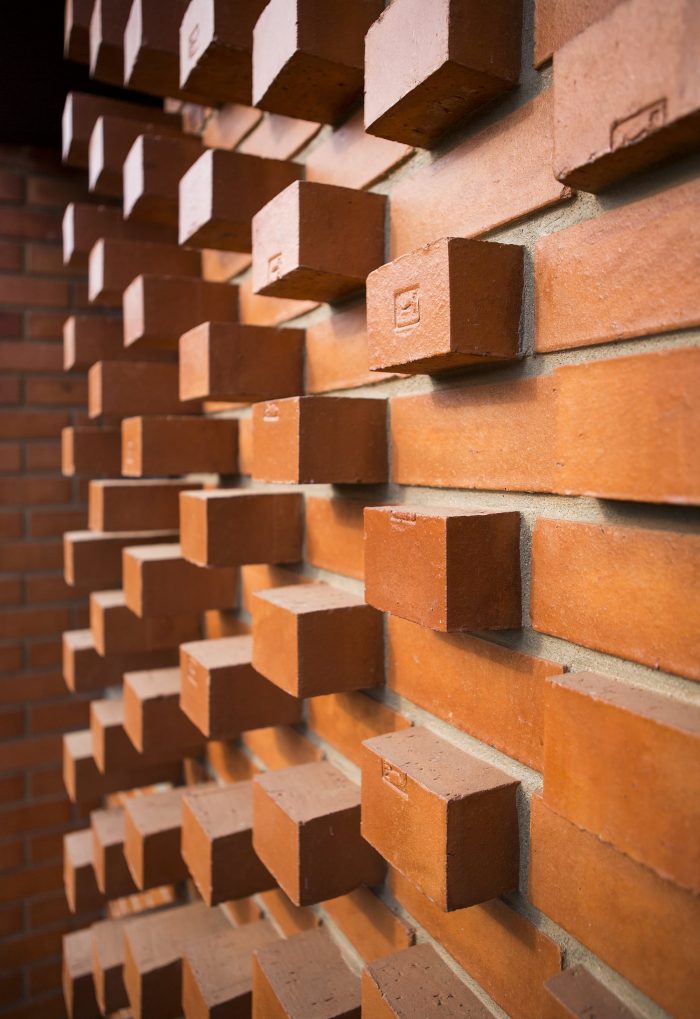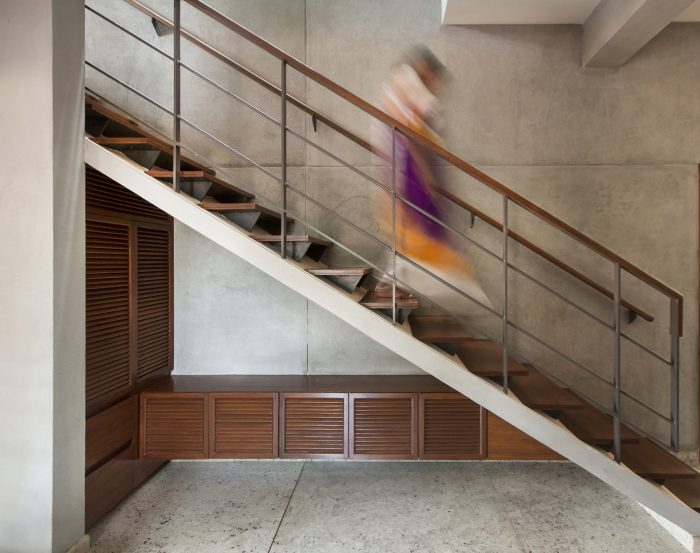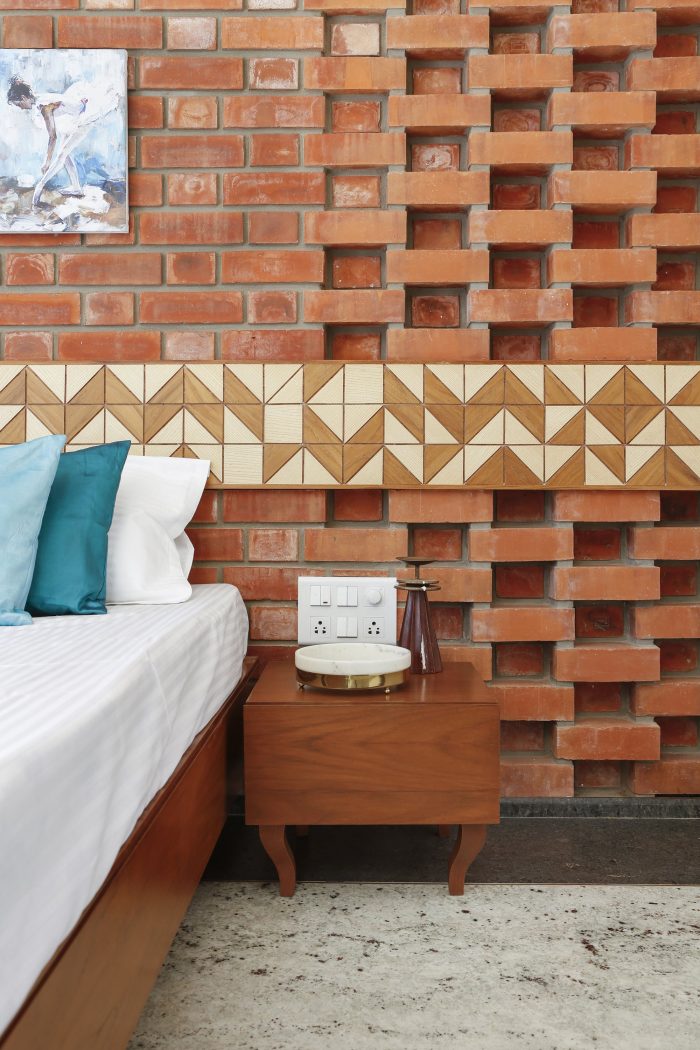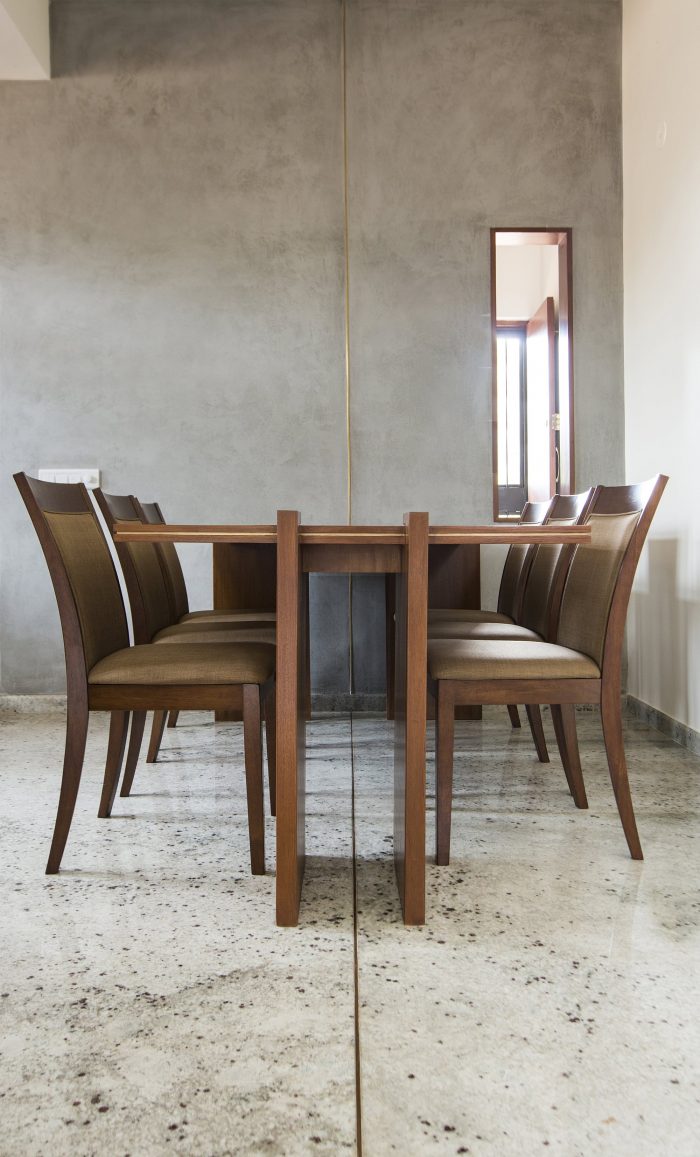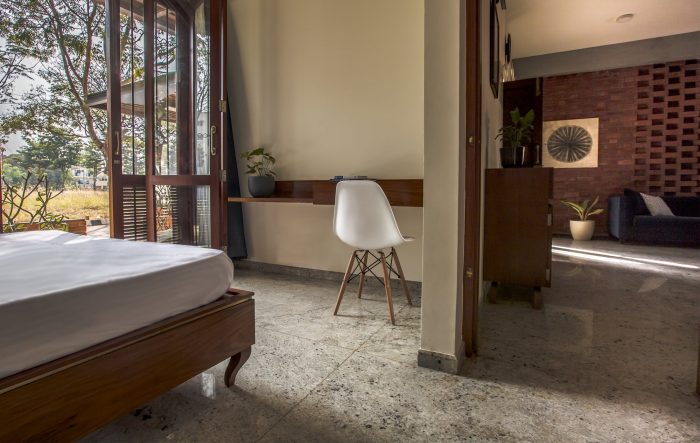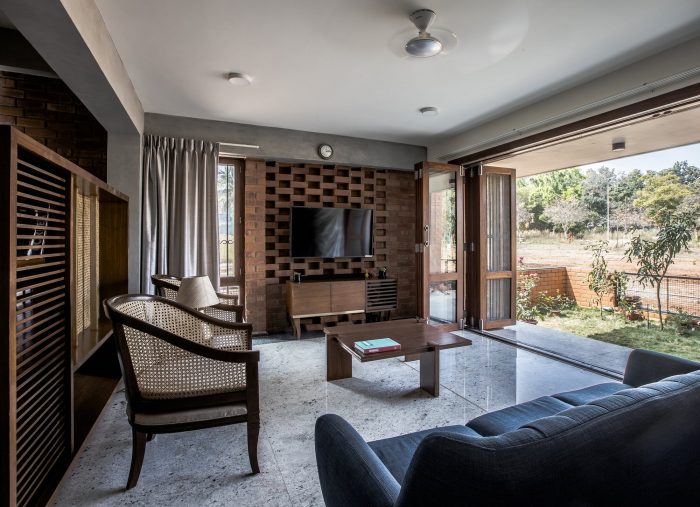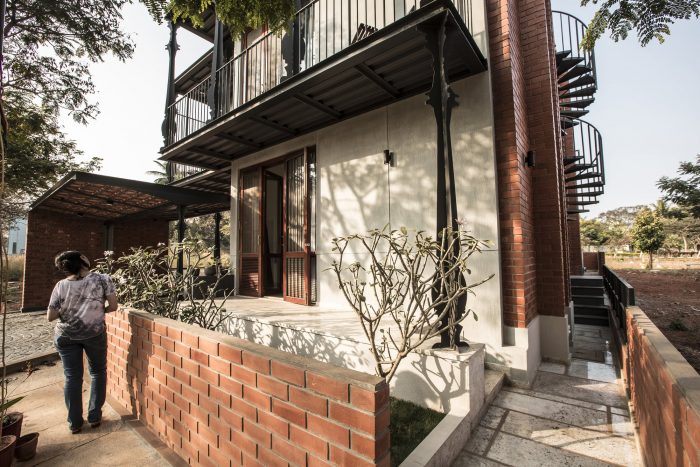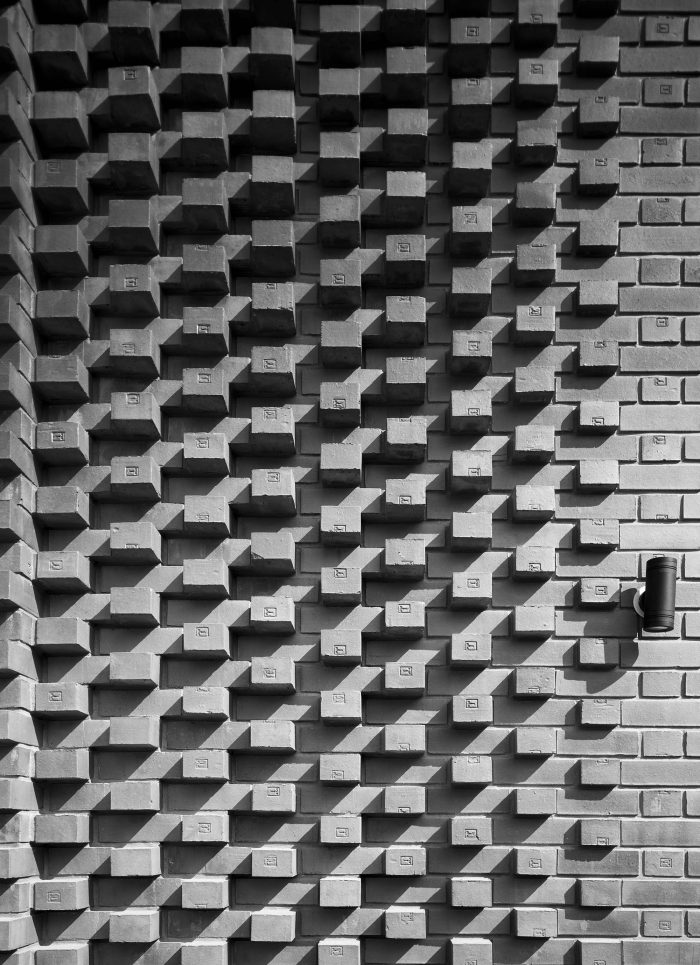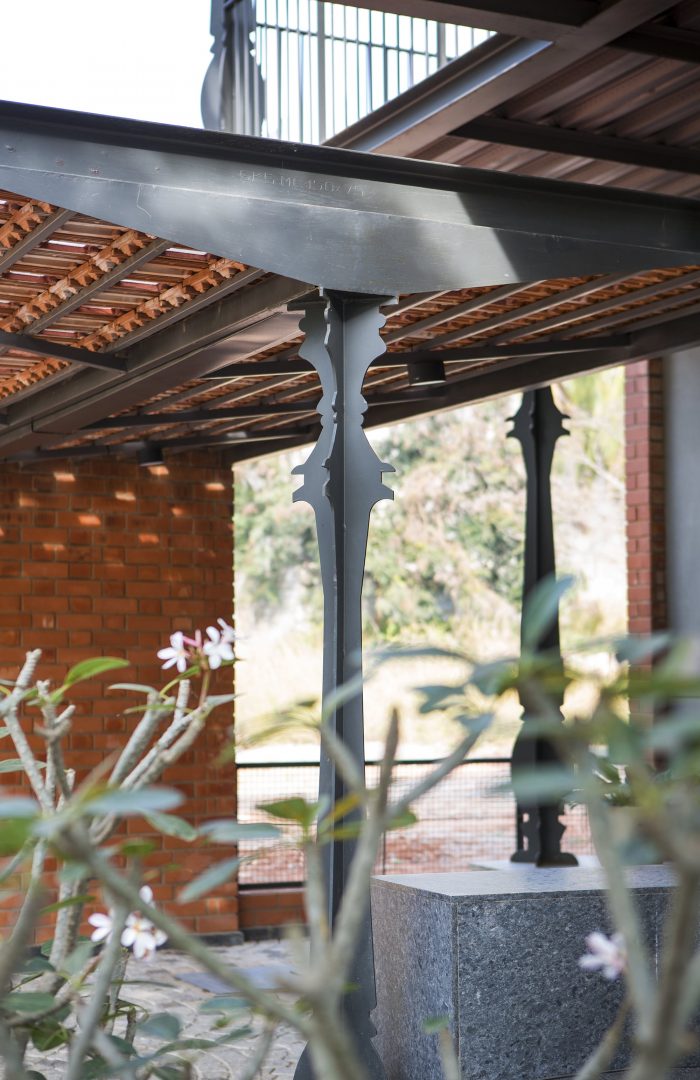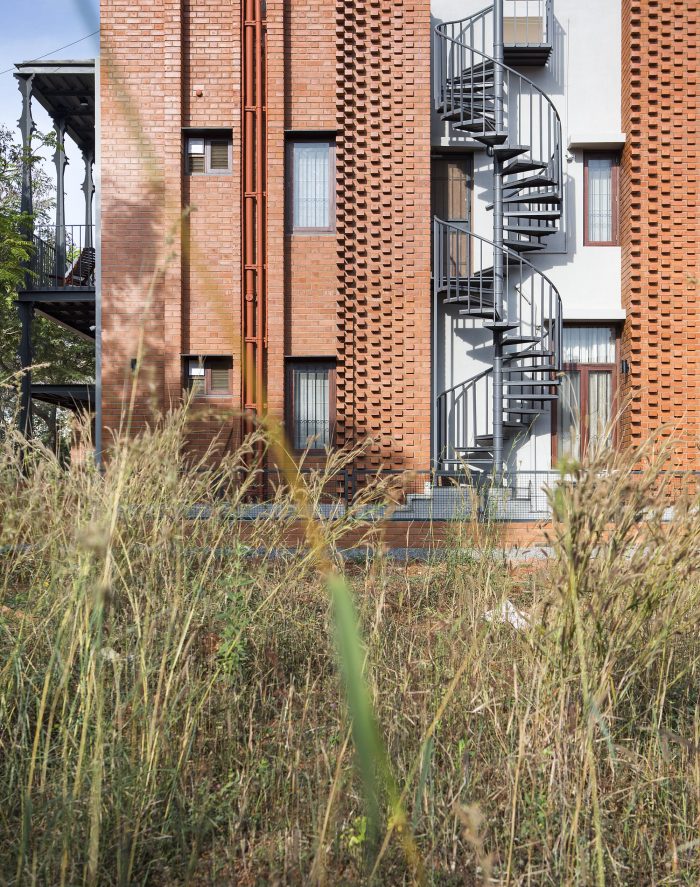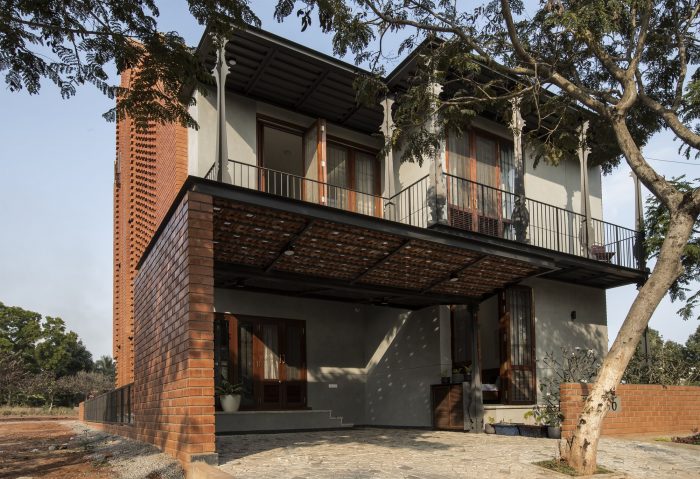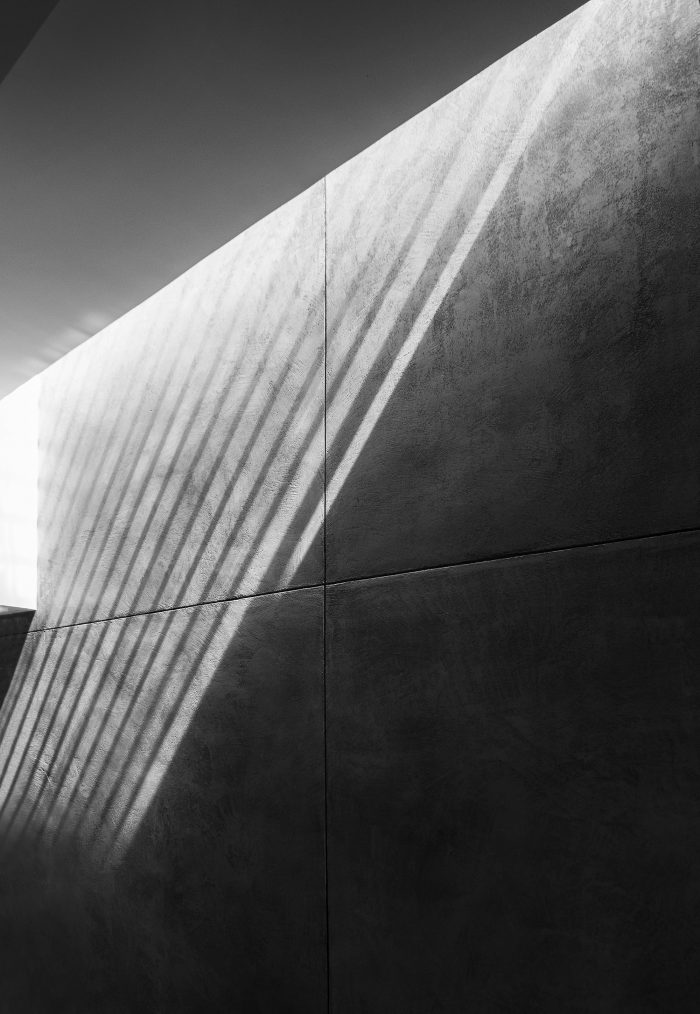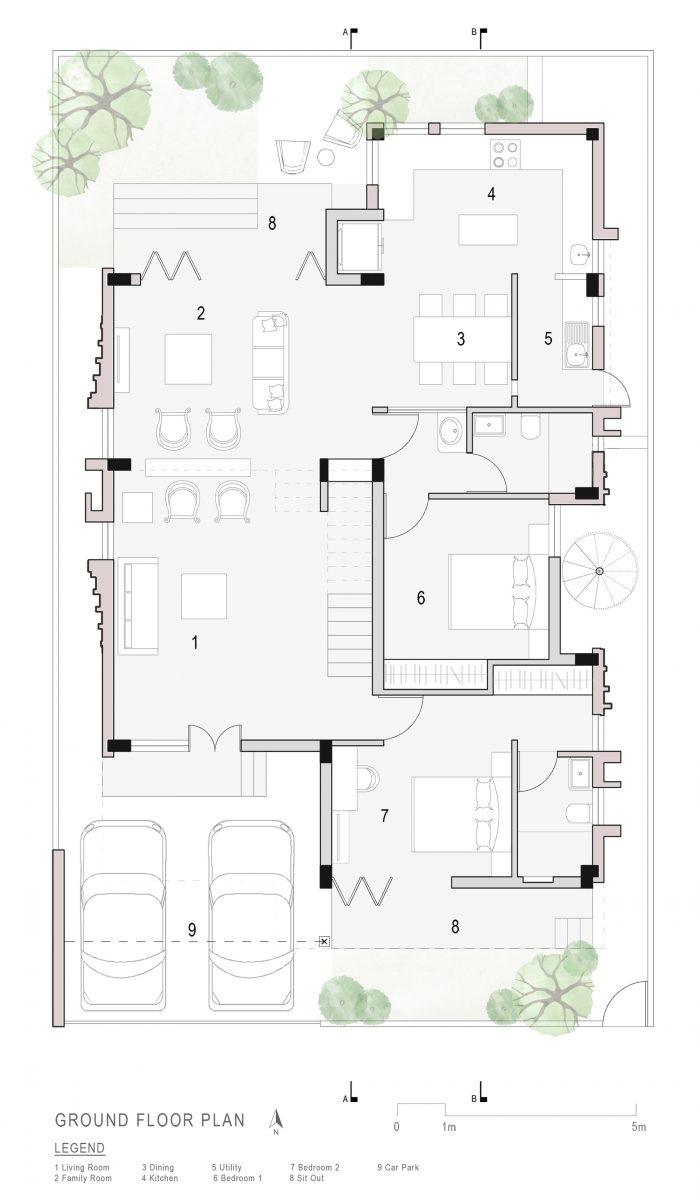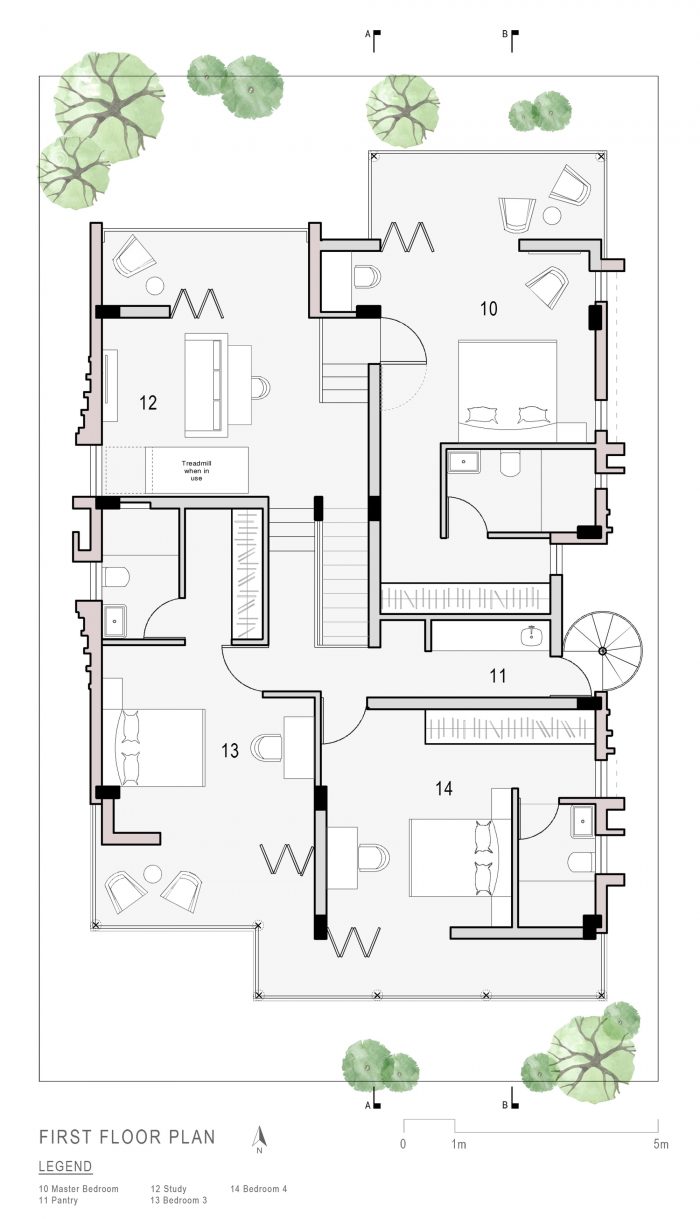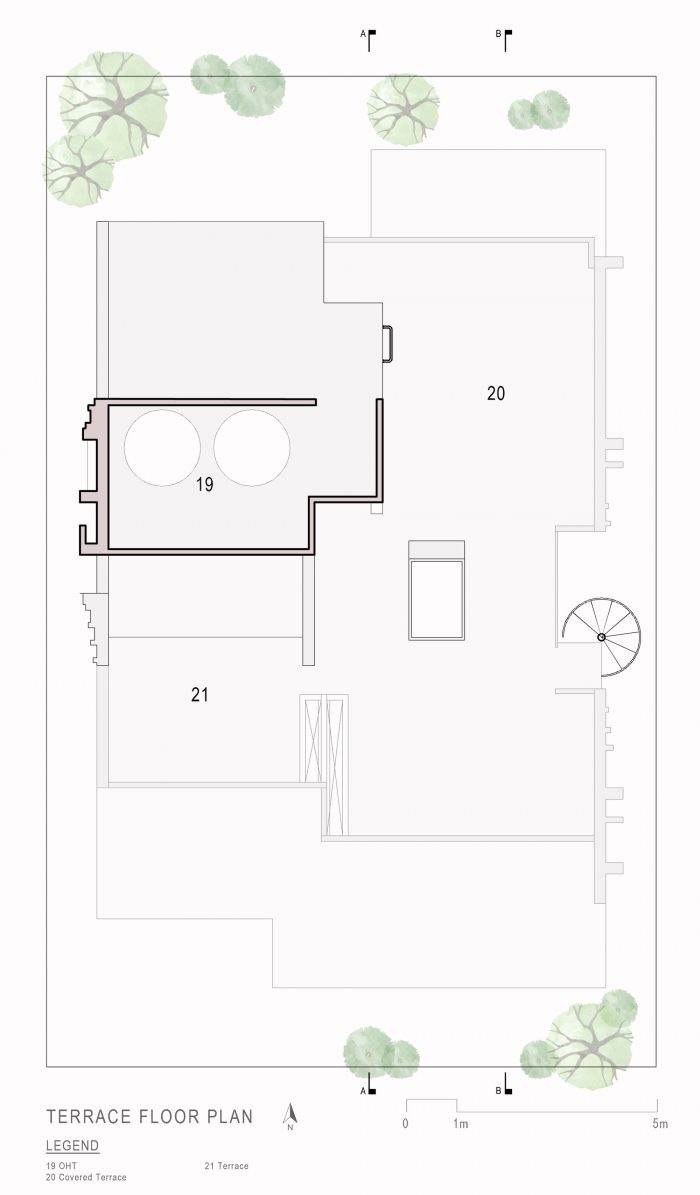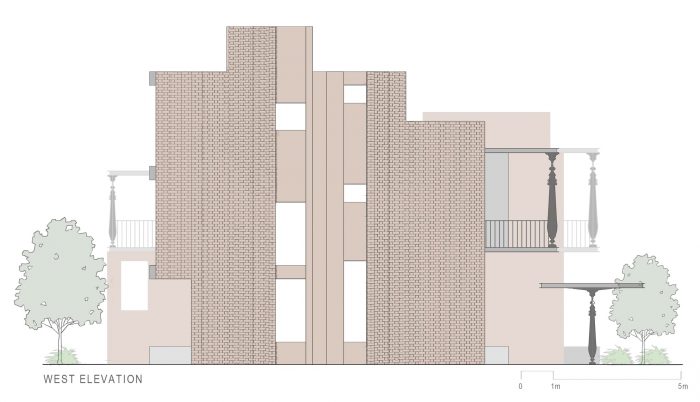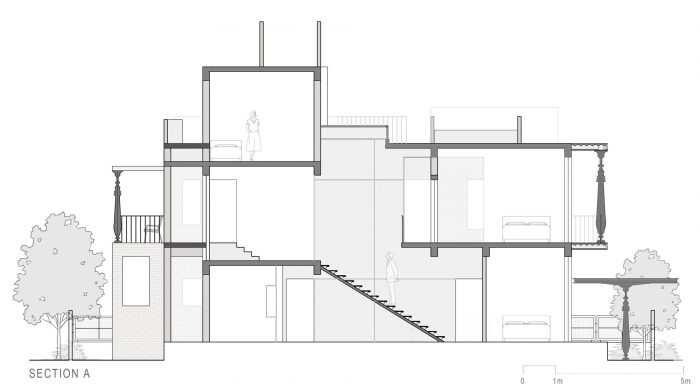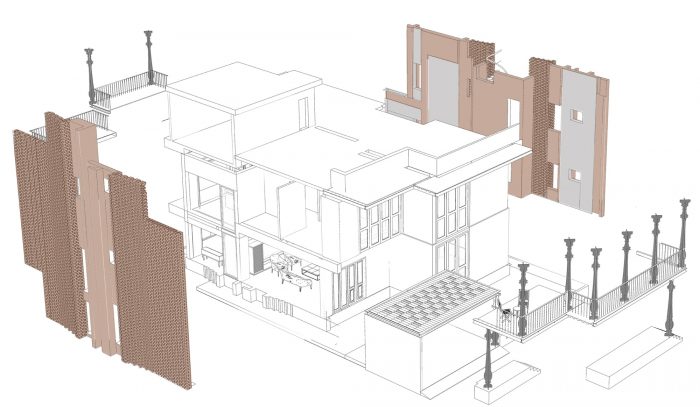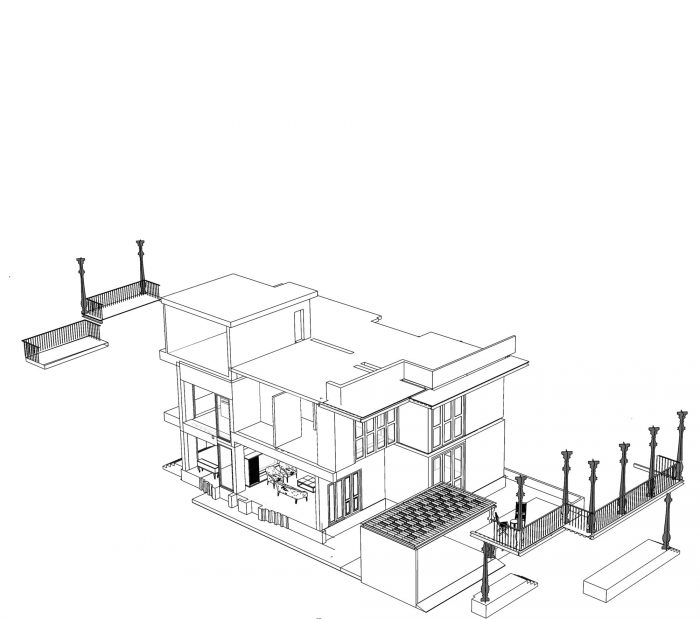设计是根据客户的要求进行的,即要有一个现代的房子,其灵感来自于他们家族在印度喀拉拉邦的根。我们从喀拉拉邦的传统宫廷建筑中寻找灵感。我们注意到这些建筑的一些关键特征,如:环绕生活空间的阳台,底层厚重的砖石基础,厚重的拱门和雕刻的柱子,以及在材料和整体处理上显得更轻的一楼。这成为该建筑正面的灵感来源。雕刻的柱子是传统喀拉拉邦建筑的一个突出元素,被采用,但有一个现代的变化。
The design developed from the client’s brief, which was to have a modern house inspired by the family’s roots in Kerala, India. We looked towards traditional palace construction of Kerala for inspiration. We noticed a few key features that most of these structures portrayed, such as – the verandah that wrapped the living spaces all around, the appearance of a heavy masonry base on the ground floor, with thick arches and carved columns and a first floor which appeared to be lighter in terms of materials and overall treatment. This became the inspiration for the front façade of the building. Carved columns, which are a prominent element of traditional Kerala architecture, were adopted but with a contemporary twist.
我们用金属板制作了这些柱子,切割成与传统柱子的轮廓相匹配的形状,并作为一个十字架放置。这些柱子框住了房子的正面,坐在一个大的连续悬空的阳台上。前面的悬空不仅保护了南面的立面,而且还允许充足的交叉通风。规划一直保持简单。开放的、连续的公共和半公共空间与客人的卧室都在一楼。夫妇俩和他们的孩子的个人私人空间,以及一个独立的家庭区域都在一楼。将该计划设计成一个外向型结构的主要工作是为了充分利用景观。前面是一条安静的街道,后面是一个公园。楼梯上方有一个位于中央的天窗,通过在上层的通风帮助空气的流动,使空气得到温和的流通。
We fashioned them using a metal sheet, cut out to match the silhouette of a traditional column and placed as a cross. These columns frame the front of the house and sit on a large continuous overhanging balcony. The overhang in the front not only protects the south façade but also allows for ample cross ventilation. The planning has been kept simple. The open and continuous public and semi-public spaces are on the ground floor along with the guest bedrooms. Individual private spaces for the couple and their children, along with a separate family area are on the first floor. The main exercise of designing the plan as an outward-looking structure was to take full advantage of views. The front opens up to a quiet street and the rear of a park. A centrally located skylight over the staircase allows a mild draft of air by ventilating it at the upper level aiding the movement of air.
建筑物的两边显示出暴露的砖砌体的强烈存在。泥土的赤土色直接参考了喀拉拉邦建筑的材料性,并与前面和后面的轻金属阳台形成鲜明对比。砖石上的开口保持最小,以突出前后的开放性。起伏的砖砌体是对曼加罗尔瓦片屋顶表面的俏皮解释–这是在喀拉拉邦广泛见到的另一个元素。砖砌体膨胀,以允许开口,并使用弗拉芒债券建造。当砖块逐渐向外倾斜时,它的负面印记就会出现在内侧–这几乎是对外面的戏剧性的认可
The two sides of the building show the strong presence of exposed brick masonry. The earthy terracotta colour makes a direct reference to the materiality of Kerala architecture and stands in sharp contrast to the light metal balconies pushing through in the front and rear. Openings in the masonry are kept minimal in order to accentuate the openness in the front and rear. The undulating brick masonry is a playful interpretation of a Mangalore tiled roof surface – another element seen extensively in Kerala. The masonry swells out to allow for openings and is constructed using the Flemish bond. As the brick gradually corbels outwards, its negative imprint is seen on the inner side – almost as an acknowledgement of the drama outside!
内饰材料的使用也受到了喀拉拉邦传统住宅中的启发。藤条屏风与柚木的结合,是为了给原本简约的室内增添怀旧的元素。 连续的、几乎是整体的花岗岩地板有助于进一步突出开放的地面规划。这座房子由放置在结构屋顶上的太阳能电池板供电。
The use of materials for the interiors was also inspired by those seen in a traditional Kerala home. The combination of cane screens with teak wood is an attempt to add that element of nostalgia to an otherwise minimal interior. The continuous, almost monolithic granite floor helps further accentuate the open ground floor plan. The house is powered by solar panels placed on the roof of the structure.
Architects: Kamat & Rozario Architecture
Area : 3650 ft²
Year : 2018
Photographs :Niveditaa Gupta
Manufacturers : Jaquar, Saint-Gobain, Asian Paints
Project Architect : Divya Joseph
Cost : 15 million INR
Design Team : Smruti Kamat-Rozario, Lester Rozario, Divya Joseph
City : Bengaluru
Country : India

